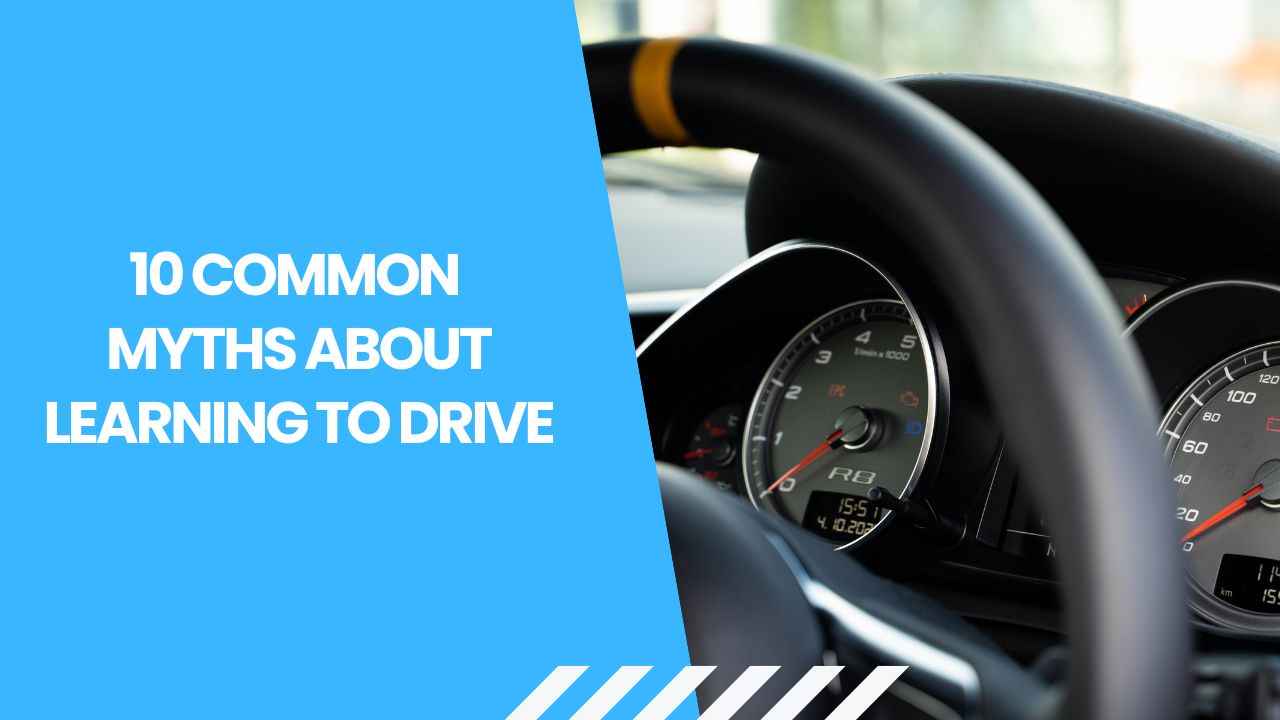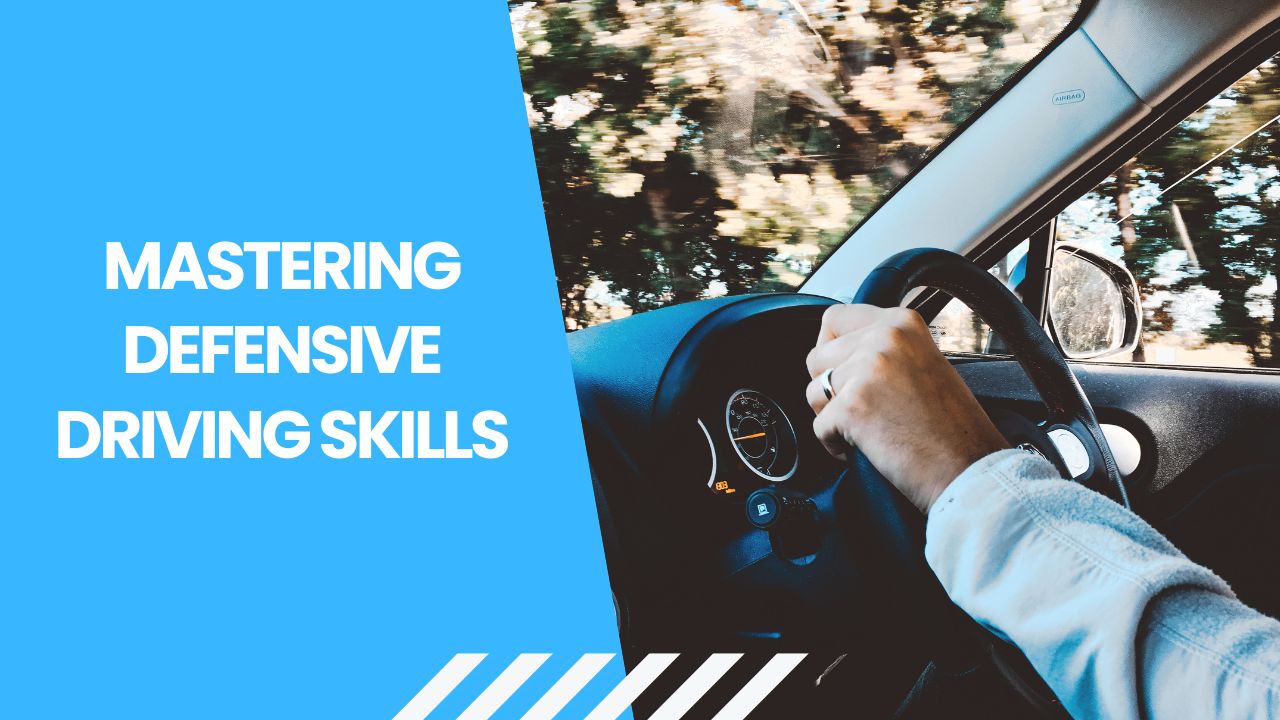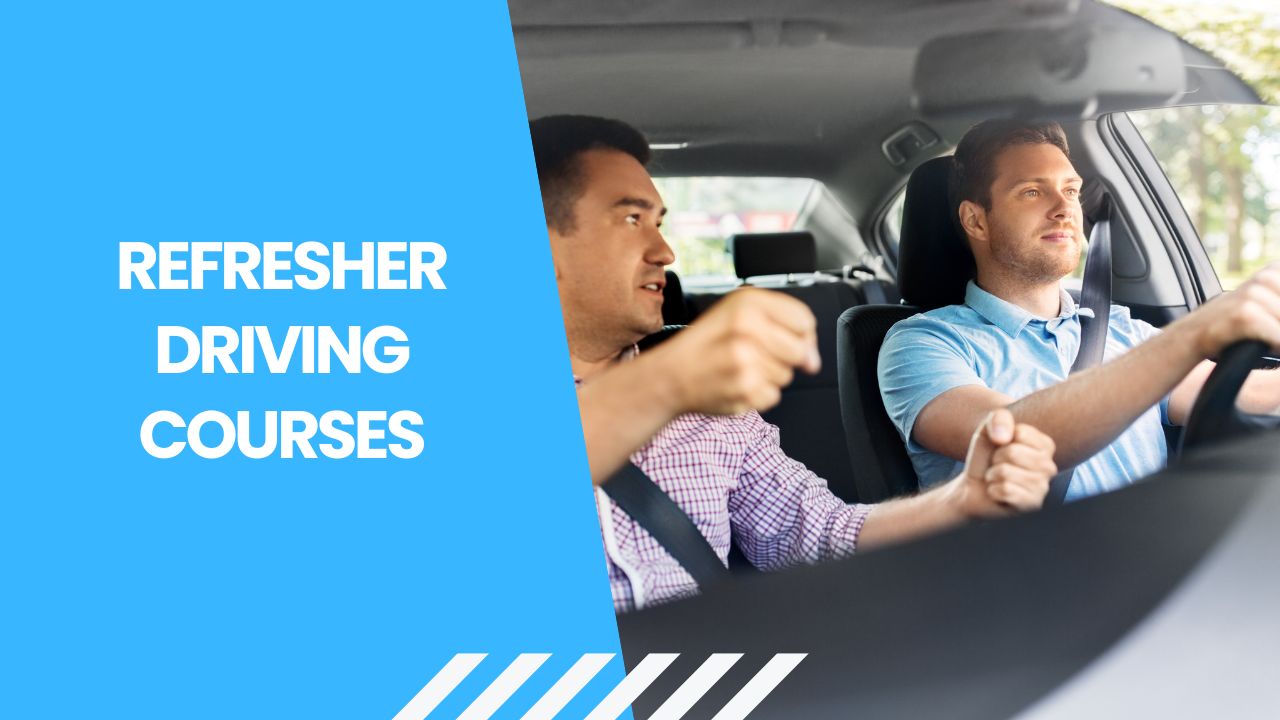Learning how to drive is a big milestone—one that opens the door to independence, convenience, and new opportunities. However, this process is often clouded by myths and misinformation that can make it seem more intimidating than it really is. Whether you’re a nervous beginner or someone preparing for a refresher course, it’s important to separate fact from fiction when it comes to driving lessons.
In this blog, we’ll bust 10 common driving myths about learning to drive—and explain what you really need to know to get behind the wheel with confidence.
Myth 1: “You Only Need to Learn for the Driving Test”
Reality: The driving test is just one part of learning to drive—it’s not the end goal. The real objective is to become a safe, confident, and responsible driver for life. Focusing only on passing the test can lead to dangerous habits or incomplete learning.
Tip:
Look for a course that teaches you practical skills like defensive driving, night driving, and driving in bad weather—not just how to pass the test.
Myth 2: “Manual Cars Are Better to Learn On Than Automatic”
Reality: While learning to drive a manual can be useful, it’s not necessary for everyone. In many urban settings and countries, automatic vehicles are more common. Choosing which to learn depends on your future driving needs.
Tip:
If you’re never planning to drive a manual, an automatic license may be perfectly suitable and easier to earn.
Myth 3: “Driving Schools Are Too Expensive—Friends or Family Can Teach Me”
Reality: While having a friend or parent teach you might save money upfront, it often leads to bad driving habits, missed technical details, and slower progress. Professional instructors are trained to teach with patience, safety, and structure.
Tip:
A certified driving school offers structured lessons, safety protocols, and up-to-date knowledge of road laws.
Myth 4: “You Can Learn Everything in a Few Hours”
Reality: Driving involves mastering not just the controls but also judgment, awareness, and confidence. For most learners, it takes 20–50 hours or more of practice to become test-ready and truly road-safe.
Tip:
Be patient with yourself. Learning to drive is a skill that builds over time with practice and feedback.
Myth 5: “You Don’t Need to Worry About the Theory—Just Focus on Driving”
Reality: Knowing traffic rules, signs, and safety procedures is crucial. Many learners fail the theory test and even the practical exam due to poor understanding of the rules of the road.
Tip:
Prepare for both the written and practical exams equally. Apps, practice tests, and theory classes can help.
Myth 6: “Women Are Not Good Drivers”
Reality: This myth is rooted in outdated stereotypes. Studies have shown that women are often safer drivers than men, with lower accident rates in many regions.
Tip:
Driving skill is based on training, experience, and focus—not gender. Everyone has the same potential to be a great driver.
Myth 7: “You’ll Learn Faster If You Drive Fast”
Reality: Speeding while learning can increase your chances of making mistakes and cause anxiety. Learning to drive safely means knowing when to slow down, assess risks, and maintain control.
Tip:
Focus on smooth driving and proper technique. Speed and confidence will come naturally with time and experience.
Myth 8: “Once You Get Your License, You’re a Perfect Driver”
Reality: A driver’s license is just the beginning. Becoming a truly confident and skilled driver takes months—or even years—of experience on different roads and in different conditions.
Tip:
Continue to learn even after getting licensed. Consider taking advanced driving courses to build on your skills.
Myth 9: “Night Driving and Bad Weather Can Be Skipped While Learning”
Reality: Driving at night, in rain, or fog is part of real-world driving. Avoiding these situations during training can leave you unprepared for when they occur unexpectedly.
Tip:
Ask your instructor to schedule at least a few lessons during poor weather or after dark to build full competence.
Myth 10: “You Can Learn to Drive Without Knowing Basic Car Maintenance”
Reality: While it’s not essential to be a mechanic, every driver should understand basic car maintenance—checking tire pressure, oil levels, lights, and knowing what dashboard warning lights mean.
Tip:
Most driving schools now include basic car care and safety checks in their curriculum. Don’t skip them—they can save your life (and money).
Final Thoughts: Driving Is a Lifelong Skill
The journey to becoming a good driver doesn’t end when you get your license—it’s a continuous learning process. Believing in myths can create fear, delay progress, and even put you at risk. Instead, choose to learn with clarity, confidence, and curiosity.
Enrolling in a professional driving school is one of the best ways to ensure you’re getting correct information, personalized training, and a strong foundation for your future as a safe and smart driver.
Ready to Begin Your Driving Journey?
At Chinook Driving Academy, we help you build real-world confidence, master road safety, and prepare for every kind of driving challenge. Whether you’re a complete beginner or need a refresher course, we’re here to guide you.
Book your first lesson today—and take the wheel with confidence.



